You’re cruising down the highway when your ELD app crashes — again. Sound familiar?
If you’re like thousands of truck drivers across America, you’ve probably dealt with unreliable electronic logging devices that promise the world but deliver headaches. Finding an ELD app that actually works shouldn’t feel like searching for a needle in a haystack.
Since the FMCSA mandate went into full effect, most commercial drivers need an ELD. It’s not just about avoiding those hefty fines anymore — it’s about finding a solution that makes your life easier, not harder.
This comprehensive guide cuts through the marketing fluff to show you exactly what makes a great ELD app for truck drivers. We’ll explore must-have features every ELD needs, common problems that waste your driving time, and how to choose between different pricing models.
Whether you’re buying your first ELD or finally ready to ditch that frustrating app, you’ll learn everything needed to make a confident decision.
Do you have any questions? Talk to ELD Advisor: 650-405-3372 or Request Callback
What Is an ELD App and Why Most Truck Driver Needs One
An ELD app is the software component of your electronic logging device system that replaces traditional paper logbooks. Think of it as your digital co-pilot that automatically tracks:
- Hours of service (HOS).
- Duty status changes.
- Vehicle location and miles.
- Engine hours and diagnostics.
Unlike paper logs requiring manual entries, an ELD app connects directly to your truck’s engine through hardware plugged into the ECM or OBD-II port.
The Legal Requirements
The FMCSA mandate makes ELDs non-negotiable for most commercial drivers. Here’s what you need to know:
Who needs it: The ELD mandate applies to drivers of commercial motor vehicles engaged in interstate commerce, where the vehicle weighs 10,001 pounds or more, is a designated passenger vehicle, or is transporting placarded hazardous materials.
What’s required: Both the ELD app AND FMCSA-approved hardware.
How it works: The hardware syncs with your engine to capture:
- Engine hours.
- Miles driven.
- Location information.
- Vehicle movement status.
Benefits Beyond Compliance
Smart fleet managers and owner-operators know ELDs deliver value beyond avoiding violations. The right system becomes a business tool that actually improves operations and profitability.
Time Savings
The most immediate benefit drivers notice is how much time they get back each day. Modern ELD apps for truck drivers eliminate significant daily paperwork through automatic HOS calculations that update in real-time. During roadside inspections, what used to take many minutes of paper shuffling now happens with one click — officers receive your logs instantly via email or web transfer.
Cost Reduction
Every violation prevented is money saved, and with HOS violations costing thousands of dollars, your ELD pays for itself by preventing just one citation. But the savings extend beyond compliance. Quality ELD systems monitor idle time, helping drivers reduce fuel costs substantially each month. The vehicle diagnostics feature catches mechanical issues before they become roadside breakdowns, saving thousands in emergency towing and lost revenue.
Business Intelligence
Today’s ELD apps provide data that helps you run smarter. Real-time GPS tracking lets you give customers accurate ETAs and verify delivery completion. IFTA reporting that once took hours now generates automatically each quarter. Driver scorecards reveal patterns in hard braking, rapid acceleration, and other behaviors that impact fuel economy and safety ratings — giving you concrete ways to reduce operating costs.
When chosen wisely, your ELD transforms from a mandatory expense into an investment that improves your bottom line while keeping you compliant and safe on America’s highways.
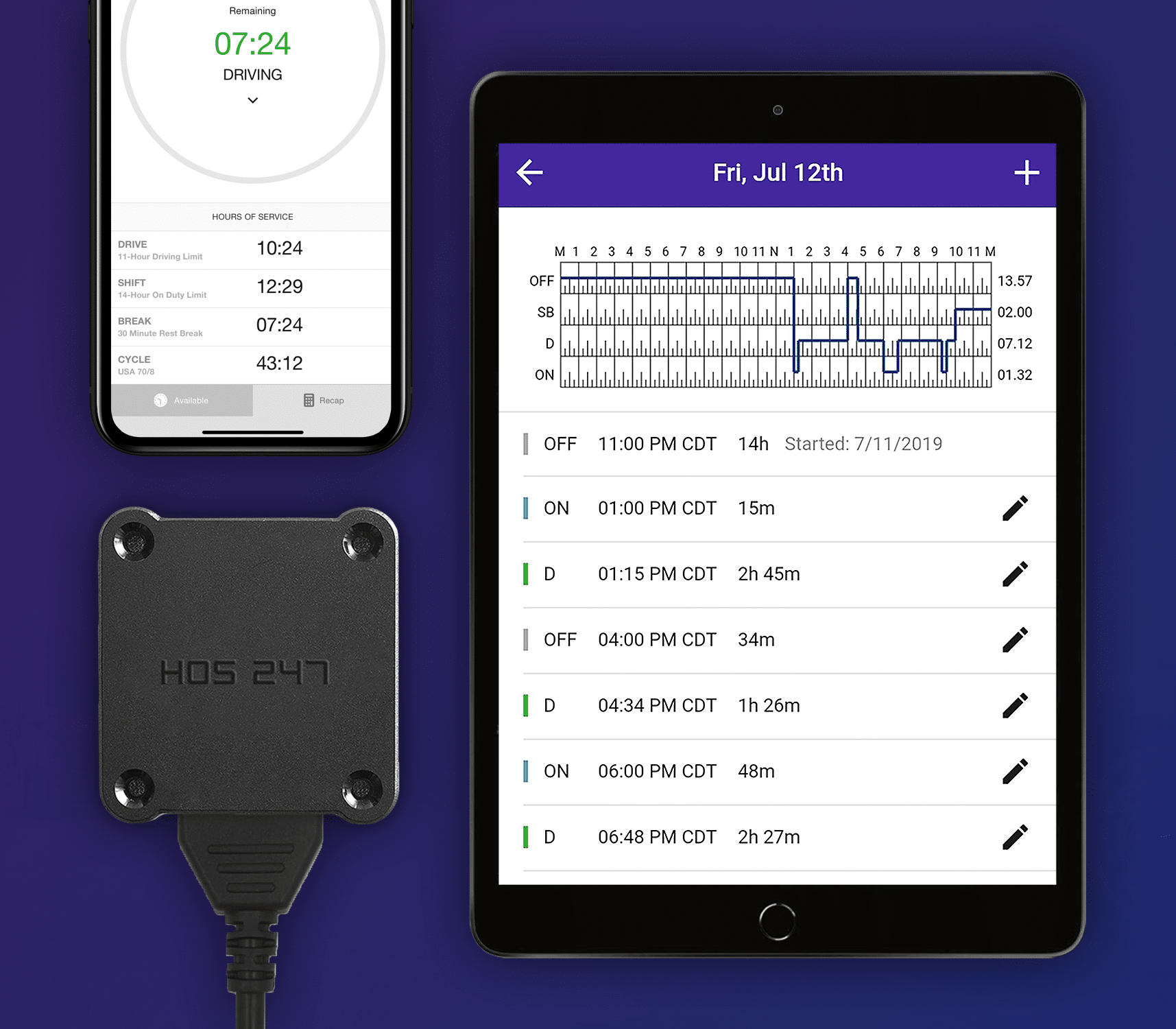
Essential Features Every ELD App Must Have
Not all ELD apps are created equal. While every FMCSA-approved app meets basic standards, the difference between mediocre and great comes down to features that make daily operations smoother.
Compliance Features
Every ELD must meet federal requirements, but the best apps go beyond minimum standards to make compliance effortless. Here’s what separates basic compliance from excellence:
- FMCSA approval status. Your ELD must appear on the official registered device list — no exceptions. Verify any provider’s certification before signing up, as using non-approved devices results in violations identical to having no ELD at all.
- Automatic HOS calculations. The app should instantly calculate your available driving hours, on-duty time, and required breaks without manual input. Look for systems that display remaining time clearly on the main dashboard, not buried in submenus.
- Real-time violation alerts. Quality apps warn you before violations occur, not after. You need alerts for approaching drive-time limits, missing breaks, and form/manner errors with enough advance notice to take corrective action.
- DOT inspection mode. During roadside inspections, you need quick access to a dedicated inspection screen that displays logs, allows data transfer via email or web service, and generates reports that officers expect to see.
User Experience Features
An ELD that’s difficult to use creates more problems than it solves. The best apps prioritize driver experience with features that work reliably in real-world conditions:
- Intuitive interface design. If you need a manual to change your duty status, the app fails the usability test. The best interfaces use large buttons, clear icons, and logical workflows that make sense even when you’re tired after a long haul.
- Offline capability. Your ELD must continue recording when you lose cell signal in remote areas. Quality apps store data locally and sync automatically when connection returns, ensuring no gaps in your logs.
- Multiple device compatibility. Whether you prefer iOS, Android, phones, or tablets, your ELD app should work seamlessly across platforms. This flexibility becomes crucial when phones break or batteries die unexpectedly.
- Quick status changes. Switching between driving, on-duty, sleeper berth, and off-duty should take seconds, not minutes. One-touch status changes and customizable shortcuts save precious time during busy delivery days.
Fleet Management Features
Modern ELD apps offer powerful fleet management tools that extend well beyond basic compliance. These features help both owner-operators and fleet managers optimize operations:
- GPS tracking. Real-time location data helps dispatchers route efficiently and provides customers with accurate arrival times. For owner-operators, GPS history proves delivery completion and helps optimize regular routes.
- IFTA reporting. Automatic state-line crossing records and mileage tracking eliminate manual IFTA calculations. The best apps help accountants with tax reporting, saving hours of administrative work.
- Vehicle diagnostics. Integration with your truck’s computer reveals engine codes, maintenance alerts, and performance metrics. Catching problems early through diagnostic monitoring prevents breakdowns that cost thousands in towing and lost revenue.
- Driver performance monitoring. Scorecards tracking hard braking, rapid acceleration, and idle time help reduce fuel costs and wear-and-tear. Even owner-operators benefit from performance insights that can lower operating expenses.
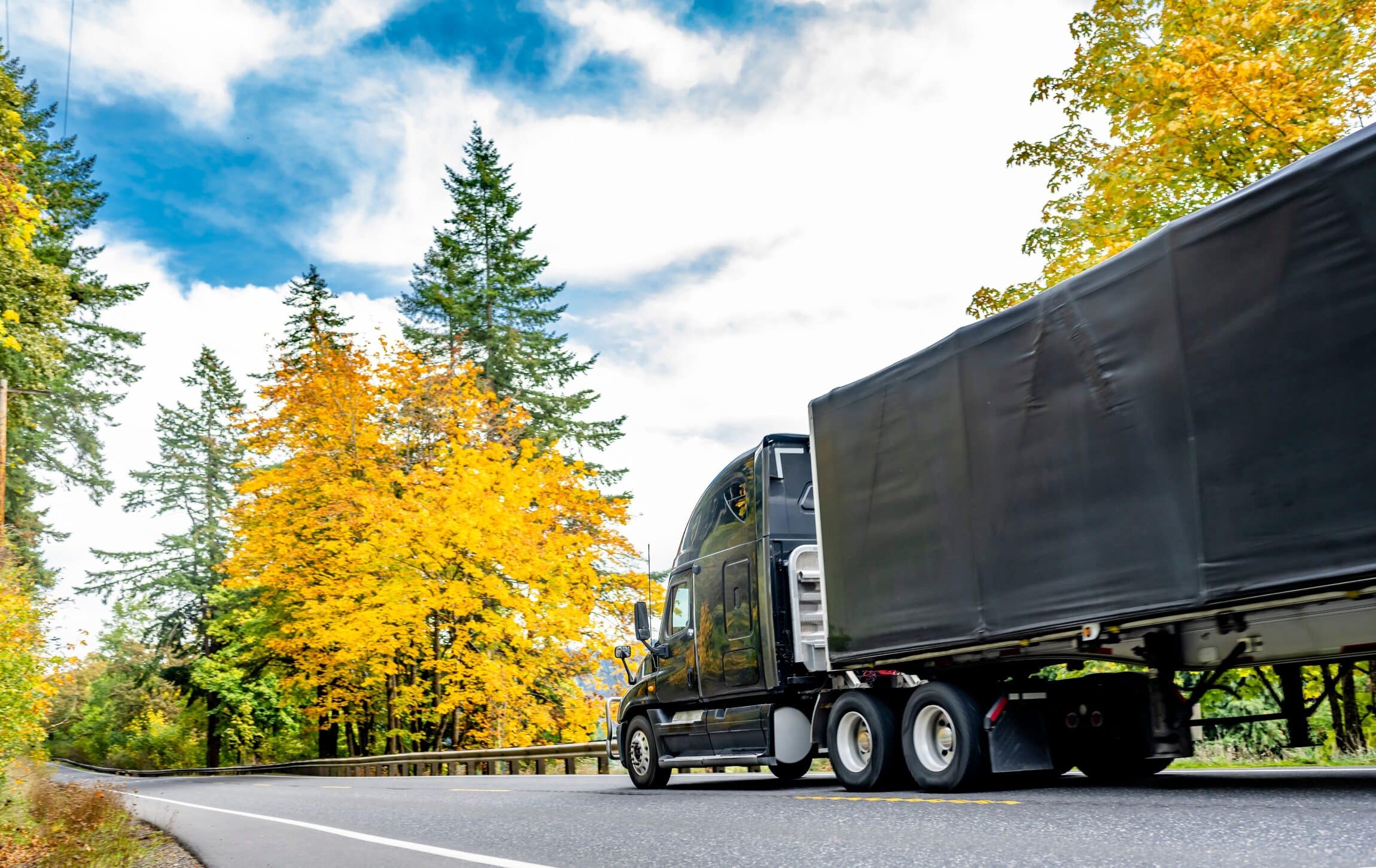
Common Problems with ELD Apps (And How to Avoid Them)
Every experienced driver has horror stories about ELD failures. Understanding these problems helps you ask the right questions and spot red flags during demos.
Technical Issues
Technology failures can turn a smooth run into a compliance nightmare. The most frustrating technical problems happen at the worst possible times — during inspections, in remote areas, or when you’re already running behind schedule.
Connectivity Problems
Nothing’s worse than losing connection between your app and hardware mid-trip, especially when it happens repeatedly. Poor Bluetooth implementation or cheap hardware causes most connectivity problems. Before committing, test the app in various conditions—inside metal trailers, in remote areas, and during temperature extremes. Ask providers specifically about their connection stability and what happens when disconnections occur.
Software Bugs and Crashes
Unstable apps that freeze during critical moments create compliance risks and operational nightmares. Check online reviews focusing on reliability complaints and ask about update frequency. Established providers with regular updates typically offer more stable experiences than newer companies still working out bugs.
Usability Problems
Even technically sound ELD apps can fail if they’re too complicated for daily use. Poor design wastes time, increases frustration, and leads to compliance mistakes when drivers can’t navigate the system properly.
Complex Interfaces
Some apps bury essential functions under multiple menus or use confusing icons that require memorization. During peak delivery hours, you can’t afford five minutes just to change duty status. Request a live demo focusing on daily tasks like status changes, adding remarks, and certifying logs. If the salesperson struggles to navigate their own app, imagine your frustration at 2 AM.
Limited Language Support
For many drivers, navigating complex logs in a second language adds unnecessary stress. If English isn’t your primary language, verify that the provider offers customer support in your preferred language — technical problems become exponentially harder when language barriers exist.
Business Issues
The business side of ELD providers can create problems just as severe as technical failures. Hidden costs, poor support, and inflexible contracts trap drivers in bad situations that affect their bottom line.
Poor Customer Support
When you’re stuck at a weigh station with a malfunctioning ELD, waiting 48 hours for email support doesn’t cut it. Many providers offer 24/7 support in theory but deliver long hold times and untrained agents in practice. Test their support before buying — call at odd hours, ask technical questions, and see how quickly they respond to emails.
Hidden Fees and Contracts
That attractive $20 monthly rate often balloons with activation fees, hardware leases, data charges, and early termination penalties. Some providers lock you into two or three-year contracts with automatic renewals buried in fine print. Always request complete pricing disclosure including all possible fees, and prioritize providers offering month-to-month flexibility.
Integration Problems
Pre-2010 trucks often lack standard diagnostic ports or use proprietary connections that some ELD hardware can’t read. Before purchasing, confirm compatibility with your specific vehicle year, make, and engine type. Quality providers offer alternative installation methods or specialized adapters for older vehicles rather than turning you away.
Pro Tips to Avoid Problems
- Always request a trial period (minimum 7 days).
- Read reviews from the last 3 months (older reviews may not reflect current issues).
- Call support before buying to test response time.
- Get everything in writing including verbal promises.
- Test with your actual routes — not just in the parking lot.
How HOS247 ELD Solves These Common Problems
While many ELD providers promise reliability and ease of use, we’ve built our entire system around solving the real problems truckers face daily. Here’s how our driver-focused approach makes a difference in your operations.
Reliability First Approach
We understand that connectivity issues can derail your entire day. That’s why we’ve invested in quality hardware with robust Bluetooth technology that maintains stable connections even in challenging environments where other devices fail.
Our hardware comes with a comprehensive warranty that actually means something. Unlike providers who make you jump through hoops for replacements, our warranty process is straightforward: report the issue, receive support immediately, and get a free replacement if your device is defective. We also maintain enterprise-level infrastructure across our platform, meaning system-wide outages that affect your compliance are extremely rare.
Driver-Friendly Design
The HOS247 interface was designed by asking actual truckers what they need, not what engineers think they need. Every essential function — changing duty status, adding annotations, or entering inspection mode — requires minimal taps. The main dashboard displays your remaining drive time prominently, with real-time alerts that alert you as you approach limits.
Our app works identically on iOS and Android devices, so switching phones doesn’t mean relearning the system. Large buttons accommodate gloved hands or tired fingers, and the high-contrast display remains readable in direct sunlight or darkness. Even better, the system streamlines your daily routine by remembering key information like your truck and trailer, while keeping essential functions like changing your duty status instantly accessible on the main screen.
Efficient Support System
Our multilingual support team operates every day of the week — because breakdowns don’t take weekends off. Support representatives speak fluent English, Spanish, Polish and Russian, reducing language barriers when you need help most. We prioritize keeping hold times minimal, even during peak hours.
Our callback policy ensures that, if your call drops, we will call you back immediately so you don’t waste time on hold and explaining your issue twice. Our support agents have real trucking experience, not just call center training, so they understand the difference between a minor inconvenience and a compliance emergency. Remote diagnostic capabilities let our technicians see what’s happening with your device in real-time, solving most issues without requiring hardware swaps.
Transparent Business Model
We operate on month-to-month contracts — no two- to five-year commitments, no automatic renewals, no cancellation fees. Our pricing structure is refreshingly simple: one monthly fee covers everything including software updates, and support. There are no activation fees, no hidden charges for additional features, and no surprise bills.
New customers receive a trial period to test our system with their actual routes and workflows. If it doesn’t meet your needs, return the hardware within the first two weeks for a full refund — no questions asked, no restocking fees. This confidence in our product comes from knowing that drivers who try our system experience the difference quality makes.
We publish all pricing transparently on our website, including any potential additional costs. Need an adapter for an older truck? The price is clearly stated upfront. Want to add GPS fleet tracking? That’s an optional feature with transparent pricing.

Understanding ELD Pricing Models
ELD pricing can be confusing, with providers using different models that make comparison shopping difficult. Understanding these structures helps you calculate true costs and avoid budget surprises down the road.
Hardware Costs
The upfront hardware investment varies dramatically between providers, and the payment method you choose significantly impacts your total expense over time.
One-Time Purchase. Buying hardware outright typically costs between $150 and $350 per unit. While this requires more upfront capital, you’ll save money long-term by avoiding lease fees. Quality hardware should last several years with proper care, making the per-month cost quite reasonable. The downside? If the hardware fails after warranty, replacement costs come from your pocket.
Lease Options. Some providers offer hardware leasing for monthly fees, reducing initial costs but increasing long-term expenses. Over a typical contract period, you might pay significantly more than the hardware’s actual value. However, leasing often includes replacement coverage and upgrades to newer models — valuable benefits if you prefer predictable monthly expenses over upfront savings.
Monthly Subscription Fees
The monthly service fee covers software access, updates, compliance management, and data storage. These fees typically vary based on features and contract terms:
- Basic plans usually include core compliance features: HOS tracking, DVIRs, and inspection modes.
- Mid-tier plans add GPS tracking, IFTA reporting, and basic analytics.
- Premium plans include advanced features like dash cams, driver coaching tools, and API integrations.
Watch for providers who advertise low base rates but charge extra for essential features. That attractive monthly rate might not include GPS tracking, IFTA reporting, or multiple driver support — suddenly you’re paying much more for what others include.
Hidden Costs to Watch For
The advertised price rarely tells the complete story. Smart shoppers dig deeper to uncover the true total cost of ownership.
Common hidden fees include:
- Activation or setup charges.
- Early termination penalties.
- Data overage charges beyond included limits.
- Paper log fees when the system fails.
- Support charges for after-hours assistance.
- Additional user accounts for team drivers.
Some providers also charge for software updates beyond basic patches, integration with third-party systems, or accessing historical data beyond a certain period.
Contract Terms and Cancellation Policies
Contract structures significantly impact your flexibility and financial risk. Multi-year contracts might offer lower monthly rates but lock you into potentially outdated technology and prevent switching if service deteriorates. Month-to-month agreements may cost slightly more but provide freedom to change providers without penalty.
Read cancellation policies carefully — some providers require extended notice periods, others auto-renew for full contract terms if you miss a narrow cancellation window. Early termination fees can reach substantial amounts on multi-year contracts. The best providers offer pro-rated refunds for prepaid services and clear, reasonable cancellation procedures.
Value vs. Price Considerations
The cheapest ELD isn’t always the most economical choice. A budget option that crashes frequently, has poor support, or lacks essential features costs more in lost time, violations, and frustration than a slightly pricier reliable system.
Consider the total value equation: How much time will you save with an intuitive interface? What’s the cost of one preventable violation? How valuable is responsive support when you’re stuck at a weigh station? Factor in reliability ratings, customer reviews, and company stability — a great deal from a company that might not exist next year is no deal at all.
At HOS247, we understand that transparent, fair pricing builds long-term customer relationships. We compete on value and service, not confusing pricing schemes designed to hide true costs. Our straightforward pricing means you know exactly what you’re paying for, with no surprises down the road.
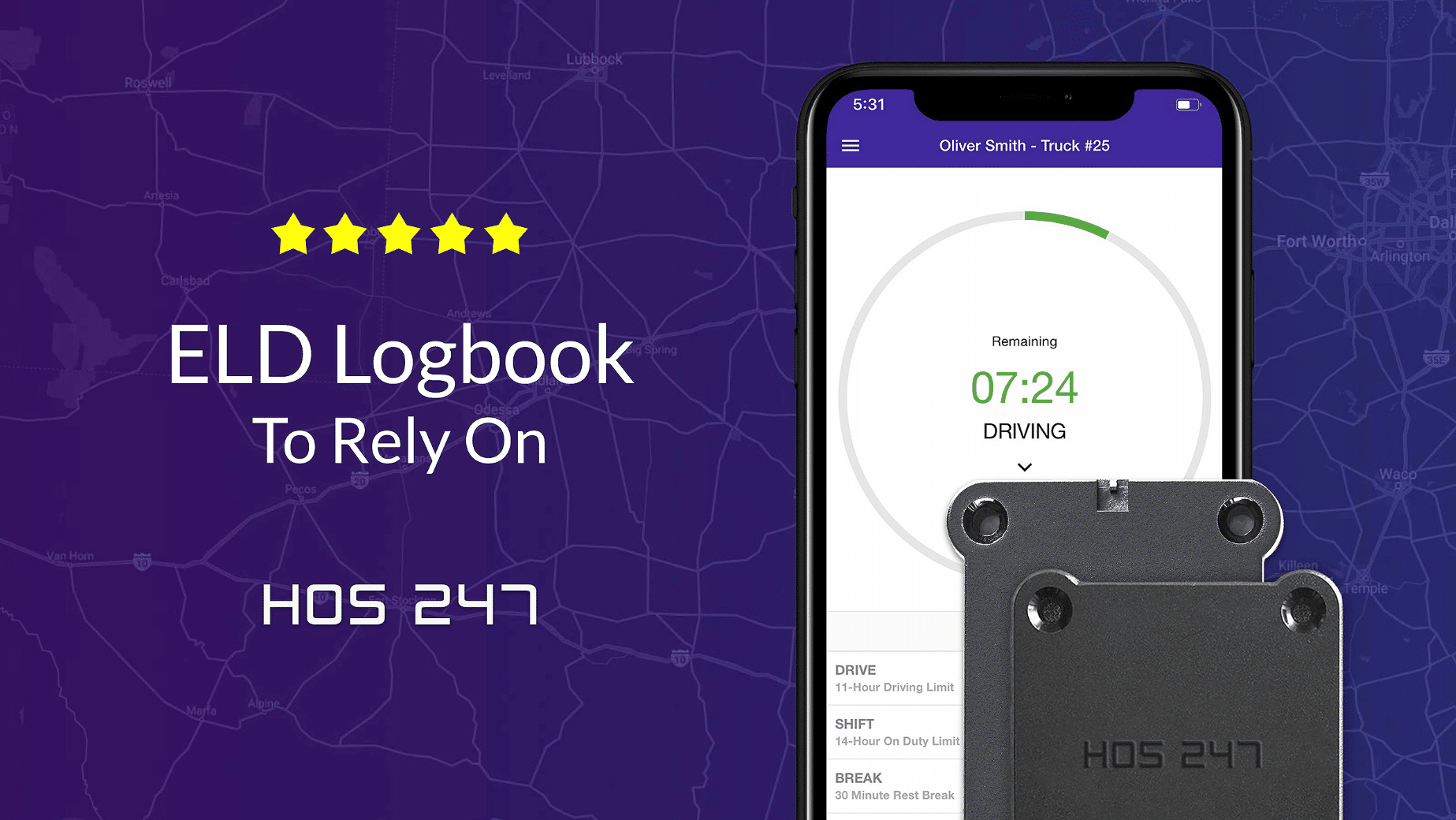
Major ELD Apps for Truck Drivers
Understanding how different ELD apps perform in real-world conditions helps you make an informed choice. Here’s what drivers are saying about the major players in the market, based on app store ratings and user reviews.
| RANK | ELD PROVIDER | iOS APPSTORE | ANDROID PLAYSTORE |
|---|---|---|---|
| 1 | |||
| 2 | JJ Keller | ||
| 3 | BigRoad | ||
| 4 | Garmin | ||
| 5 | Rand McNally | ||
| 6 | Geotab | ||
| 7 | |||
| 8 | Transflo | ||
| 9 | PeopleNet | ||
| 10 | Verizon |
Comparing ratings and reading between the lines of user reviews reveals common patterns. Five-star reviews typically mention reliable connectivity, responsive support, and intuitive interfaces. One-star reviews almost always involve connectivity failures during critical moments, poor customer service experiences, or hidden fees discovered after signing contracts.
The most telling reviews come from drivers who’ve switched providers — they offer direct comparisons and explain what prompted their change. Pay special attention to reviews from owner-operators versus company drivers, as their needs and experiences often differ significantly.
How to Choose the Right ELD App for Your Needs
Different trucking operations require different ELD solutions. Your perfect match depends on your specific situation, budget, and growth plans.
For Owner-Operators
As an owner-operator, you need flexibility without unnecessary complexity. Your ideal ELD balances affordability with essential features that keep you compliant and efficient.
Flexibility and No-Contract Options. Month-to-month agreements let you switch providers if your needs change or service quality drops. Avoid long-term contracts that lock you into outdated technology or poor service. Look for providers who earn your business monthly rather than trapping you with contracts.
Cost-Effectiveness. Every dollar matters when you’re running your own business. Focus on providers offering transparent, all-inclusive pricing without nickel-and-diming for basic features. The lowest advertised price often isn’t the best value — consider what’s included and what costs extra.
Essential Features Only. You don’t need enterprise-level analytics or complex fleet management tools. Prioritize rock-solid HOS tracking, easy DVIR completion, and reliable IFTA reporting. Advanced features sound impressive but add complexity and cost without providing value for single-truck operations.
For Small Fleets
Small fleet operators (2-10 trucks) need scalability and management features without enterprise complexity or pricing.
Multi-Driver Management. Your ELD must handle multiple drivers efficiently, with easy driver assignment and switching between vehicles. Look for systems allowing drivers to use their personal devices while maintaining centralized compliance monitoring. The ability to view all drivers’ status from a single dashboard saves valuable time.
Scalability Options. Choose a provider that can grow with your business without requiring system changes. Starting with three trucks? Ensure the pricing structure and features scale smoothly to ten without massive cost jumps or platform migrations.
Integration Capabilities. Small fleets benefit from ELDs that integrate with dispatch software, fuel cards, and maintenance systems. These integrations eliminate duplicate data entry and provide better operational visibility without requiring dedicated administrative staff.
For Large Fleets
Large operations need sophisticated tools for compliance management, data analysis, and operational optimization.
Advanced Analytics. Beyond basic compliance, large fleets need detailed performance metrics, trend analysis, and predictive maintenance capabilities. Look for systems providing actionable insights about driver behavior, fuel efficiency, and vehicle utilization across your entire operation.
Custom Reporting. Standard reports rarely meet large fleet needs. Your ELD should offer customizable dashboards, scheduled report delivery, and data export options for integration with enterprise systems. The ability to create role-based access ensures managers see relevant information without overwhelming detail.
API Integrations. Seamless data flow between your ELD and other business systems eliminates manual processes and reduces errors. Prioritize providers offering robust APIs for integration with TMS, accounting software, and maintenance management systems.
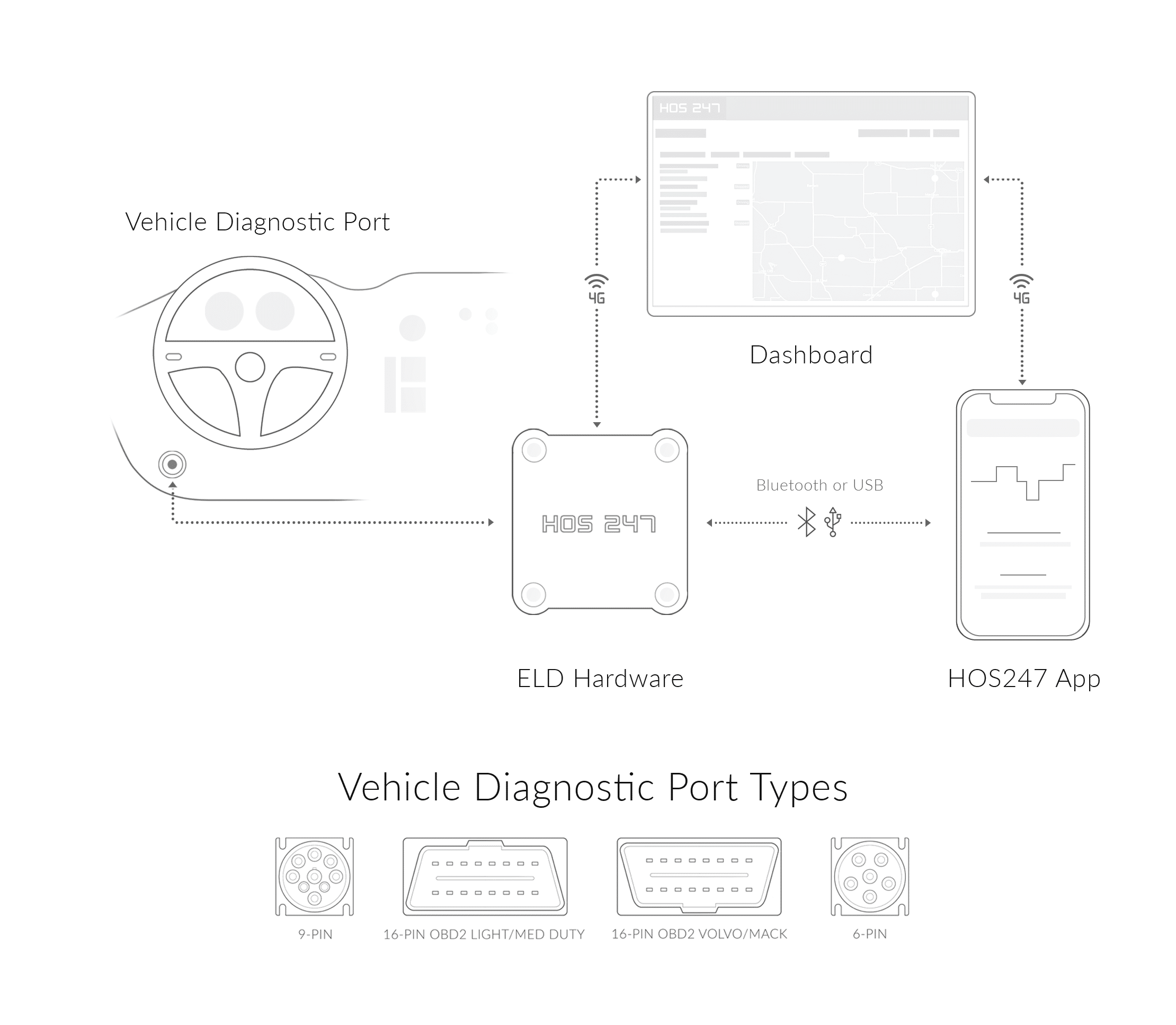
Installation and Setup: What to Expect
Getting your ELD up and running doesn’t have to be complicated. Understanding the process beforehand helps ensure smooth implementation.
Locating the Diagnostic Port
Your vehicle’s diagnostic port is typically found under the dashboard on the driver’s side, though locations vary by manufacturer and model year. In most trucks manufactured after 1996, you’ll find either a 9-pin (older models) or 6-pin diagnostic port. Some newer trucks use standard OBD-II ports similar to passenger vehicles.
If you can’t locate the port easily, check your vehicle manual or look for online guides specific to your truck model. The port might be hidden behind a panel or tucked up under the dash. Having a flashlight handy makes the search easier, especially in older vehicles where the port location isn’t obvious.
Hardware Installation Process
Once you’ve found the diagnostic port, installation typically takes just minutes. The ELD hardware should plug directly into the port — no tools required. You’ll hear or feel a click when properly connected, and LED lights on the device usually indicate successful connection.
Some older vehicles might require adapters or alternative installation methods. Quality providers include necessary adapters or offer them at reasonable prices. If your truck requires special installation, reputable companies provide clear instructions or professional installation assistance.
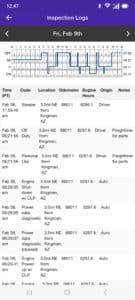
App Download and Account Setup
Before hitting the road, download the ELD app on your smartphone or tablet. Both iOS and Android versions should be available from official app stores — avoid downloading from third-party sources for security reasons.
Account creation typically requires your driver’s license information, carrier details, and vehicle identification. Have these documents ready to speed up the process. Some providers require account verification before activation, which might take a few hours to complete.
Initial Configuration
The first-time setup includes pairing your mobile device with the ELD hardware via Bluetooth. Follow the app’s prompts carefully — most connection issues stem from skipping steps during initial pairing. You’ll also set your home terminal time zone, enter co-driver information if applicable, and configure notification preferences.
Take time to explore the app’s settings during setup. Adjust font sizes for easier reading, set alert preferences for HOS warnings, and familiarize yourself with status change procedures. This initial investment of time prevents confusion during actual driving situations.
Testing and Verification
Before your first trip, test all essential functions. Change your duty status several times, ensuring each change registers properly. Create a test DVIR to understand the process. Generate a practice inspection report to see what DOT officers will see.
Drive around the parking lot to verify the system automatically switches to driving status. Check that location tracking works and that the app maintains connection when you’re inside the cab. If anything doesn’t work as expected, contact support immediately — don’t wait until you’re on the road to discover problems.
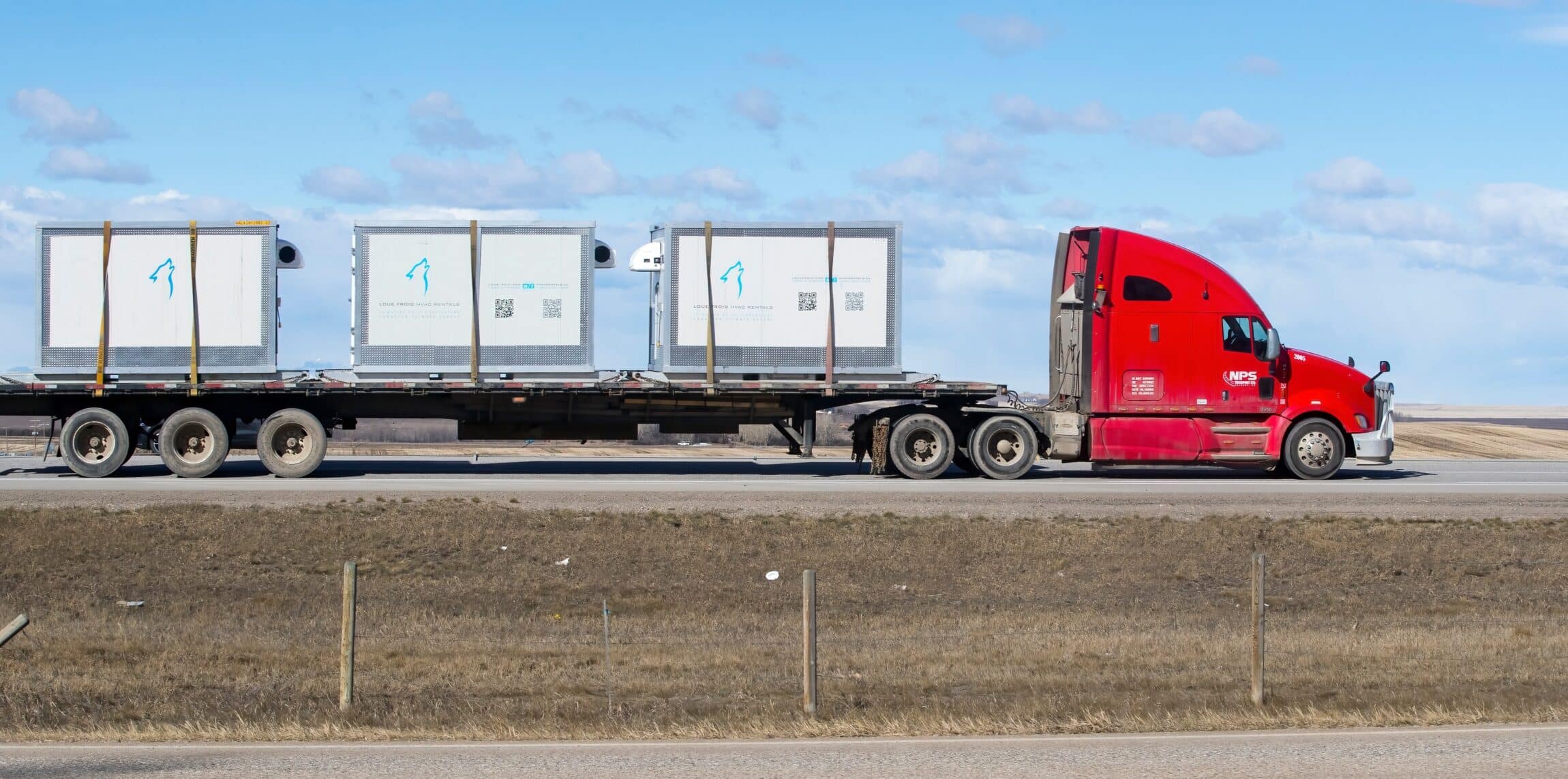
Conclusion
Choosing the right ELD app for truck drivers impacts your daily operations, compliance status, and bottom line. The difference between a quality system and a problematic one affects every mile you drive.
Remember what matters most: reliable connectivity that doesn’t fail when you need it most, intuitive design that doesn’t waste your driving time, and responsive support that actually helps when problems arise. Price matters, but the cheapest option often costs more in violations, downtime, and frustration.
Consider your specific needs — owner-operators need flexibility, small fleets need scalability, and large operations need advanced analytics. Don’t pay for features you won’t use, but ensure your chosen system handles your essential requirements reliably.
The best ELD provider earns your business through transparency, reliability, and genuine driver focus. Watch for red flags like hidden fees, inflexible contracts, and poor customer reviews. Trust providers who offer trial periods, clear pricing, and month-to-month options.
Your ELD is more than a compliance tool — it’s a daily partner in your business success. Choose a provider who understands trucking, respects drivers, and continuously improves their product based on user feedback.
Ready to experience an ELD that actually works for drivers? At HOS247, we’ve built our entire system around solving real problems truckers face daily. Because at HOS247, we believe ELD compliance should be the easiest part of your day, not the hardest. Don’t let another day pass fighting with an unreliable ELD. Make the switch to HOS247 and get back to what you do best — driving America forward.

I’ve co-founded, built and managed several transportation-related businesses. Now, I’m a founder and CEO of HOS247 – an AI Transportation Platform for trucking companies, freight brokers and other logistics operations. We are transitioning old-style operations to technology-advanced logistics entities and help them to grow their businesses. ELDs (electronic logging devices), fleet tracking and management 2.0 combined with AI-powered dispatch tools.











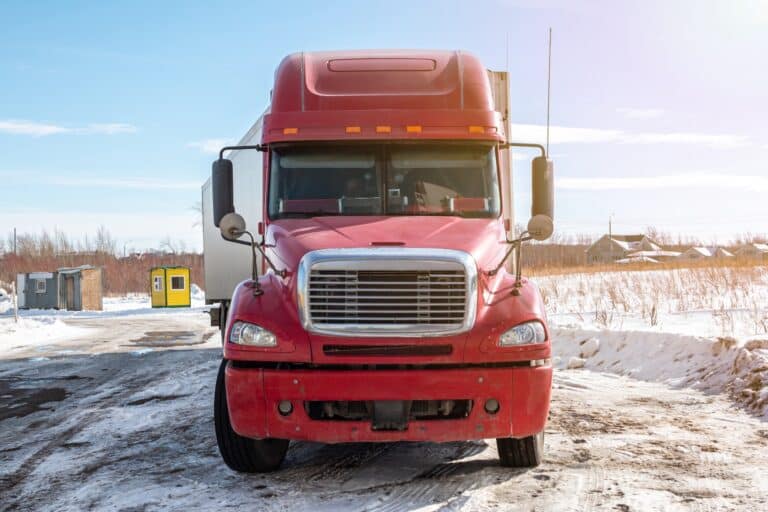
The Logbook App for iPhone to Rely On Electronic logging devices are critical for drivers and carriers that operate under FMCSA hours of service rules. The challenge is finding the right ELD when there are so many on the market.

A single hours of service (HOS) violation can lead to substantial fines, potentially exceeding $15,000, depending on severity and jurisdiction, which may impact a carrier’s bottom line. For trucking professionals and fleet managers, understanding and preventing these violations is essential

What is the ELD Final Rule? The ELD mandate/ Final Rule is a U.S. federal government regulation that mandates that drivers of commercial vehicles that are covered by the above law, are to use ELD (Electronic Logging Devices). These devices